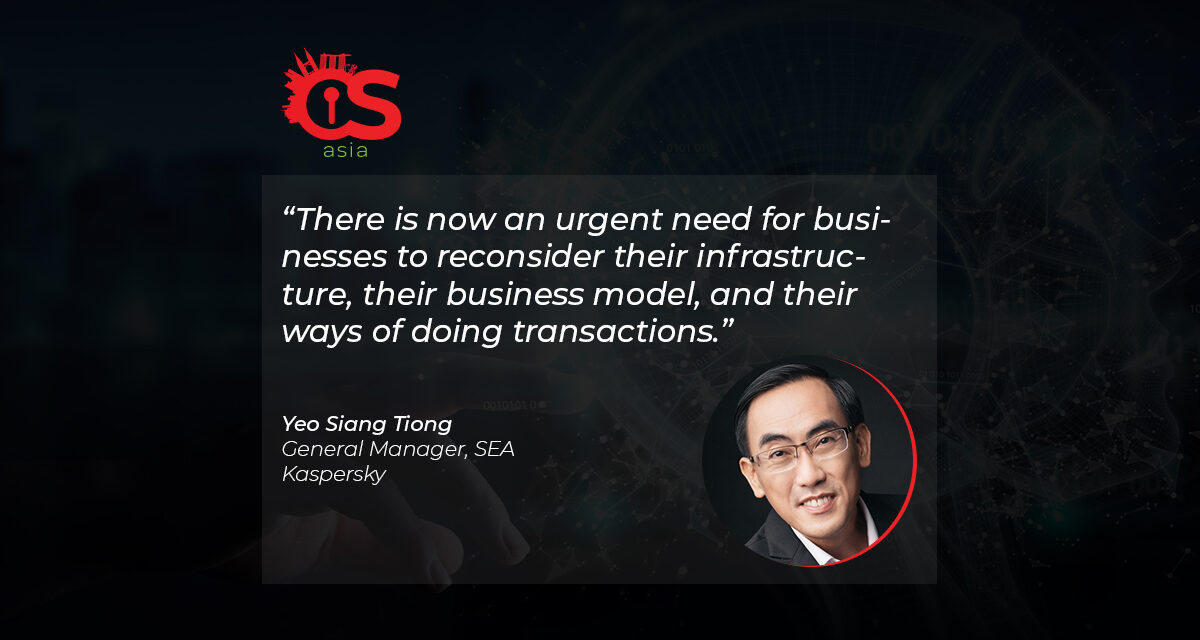Here is a modernized version of ancient Asian wisdom regarding how digitalization can benefit from a holistic ‘battle’ plan.
Having been in the IT industry for the past 28 years, I have had the chance to observe the many advancements and upheavals in the field: advancements in technology; changes in standards and protocols; mergers and acquisitions; layoffs and re-organizations.
But I had never seen South-east Asia (SEA) transforming at breakneck speed until the advent of this pandemic. This transition boils down to one segment: Digital.
As a result, there is now an urgent need for businesses to reconsider their infrastructure, their business model, and their ways of doing transactions. With the current global crisis in the background, the stakes are higher for firms to wade through this digital wave.
So today, I want to share five key areas that decision makers should consider while planning for a digital transformation. Inspired by Sun Tzu’s Art of War, the concepts and examples are based on my views and acumen. Translated into the modern context, these 5 areas are道 (alignment), 天 (natural elements), 地 (physical elements), 将 (managers), and 法(Structure and Protocols/Processes).
- Alignment
This means everyone in an organization is aligned—from the board level to the last employee in the frontline. If aligned, the entire organization will be ready for the toughest battles. This is similar to the ‘shared values’ and ‘strategy’ in the McKinsey 7-S Model.
Unfortunately, modern Western management theory sees shareholders as the ultimate people to please, with employees as mere digits akin to the factory workers of the Industrial Age.
Coupled with disproportional use of debt-based leveraged buyouts, owners are no longer owners and alas, the employees who staked their well-being on their employers have their voices are hijacked.
Fortunately, this is probably true only for the larger corporations where the gains are meaty. Nonetheless, regardless of corporation size, the spirit of the company is the thread that weaves everyone together. Without a clear sense of direction and purpose that is well communicated, the individual parts can be difficult to summon and align.
Applying this logic to digital transformation, the whole organization should be structured correctly, aligned, fully aware and on board.
A good example is how companies pivot into digital retail. A well-aligned organization recognizes that digital retail is really another channel to reach the same customer. But organizations that do not have a consistent strategy for omnichannel outreach end up setting up a new department for the pivoting, without rallying the other conventional channels to complement the effort, causing fault lines to divide the company. - Natural elements
In this era of digital transformation, the forces of nature such as timing and disposition are paramount. In the face of destructive forces, it is wiser to absorb and deflect them rather than going head on in the opposite direction.
Therefore, rather than resist or rebel against on-and-off lockdowns and restrictions, businesses should make the most of uptime and periods of business resumption. How? By harnessing the power of technology to expand the pie and mindshare in the hungry online market.
With transactions online predicted to hit US$1.2tn in SEA by 2025, it is timely to digitalize and pivot to rebuild better. - Physical elements
This concept refers to ‘terrain’—the markets that an organization should pivot towards.
Identifying the right market is critical. This is not just about identifying a geographical market; it is also about identifying the approach to the market, and targeting the correct audience type that fits into the organizational strategy.
For example, a clothing line manufacturer may choose to directly market to the consumer segment. The manufacturer may choose to go for avoid conflicting with existing ecosystem of business partners by targeting fresh terrain; or it may choose a new target audience (youngsters), reaching them through social media influencers, and selling it purely online. - Management
One cannot execute a plan without the management’s approval. This pandemic has shown that innovation is needed for organizations to thrive, and our management play a crucial role to enable it.
A great majority of surveyed by Kaspersky have confirmed that their board plays a direct role in business innovation. This means that if innovation has more weight behind it, there will be more drive, and this not only changes the way organization operates, but also its deep-rooted culture and corporate DNA.
For digital transformation, this is no different. Aligning C-level management this across the structure is also important. Execution needs to be aligned all the way to the last person in the hierarchy. That means, the many layers of managers are key to its success, and not just lip service from the top.
At times, we see the drive from the top, but the effort is thwarted by managers, especially line managers who are used to address old markets, using old tools, or are simply not convinced. - Structure and Protocols/Process
With technological advancement comes the need to plan our structures and processes, consider our assets, redefine our protocols, and train our employees regularly.
For instance, Kaspersky’s studies show that 95% of innovations fail before they can launch, due to lack of planning. Having a clear road map, division of tasks, defined protocols, comprehensive security measures, and sufficient talent and resources at hand to make innovations reach fruition.
Therefore, before diving into an irreversible transformation, it is important for organizations to have updated and secured tools, fine-tuned process flows towards a digital-first approach, and trained all employees about securing and managing an evolving technology environment.
What part then, does cybersecurity play in preparing for a smooth digital transformation?
One thing that organizations mistakenly think is that cybersecurity stifles innovation. Yet, data breaches and ransomware attacks will set the organization back in terms of digital transformation because it shakes the transformation at the foundation layer.
So yes, it is essential that your digital transformation plan must include a comprehensive look into cybersecurity from the outset.

















